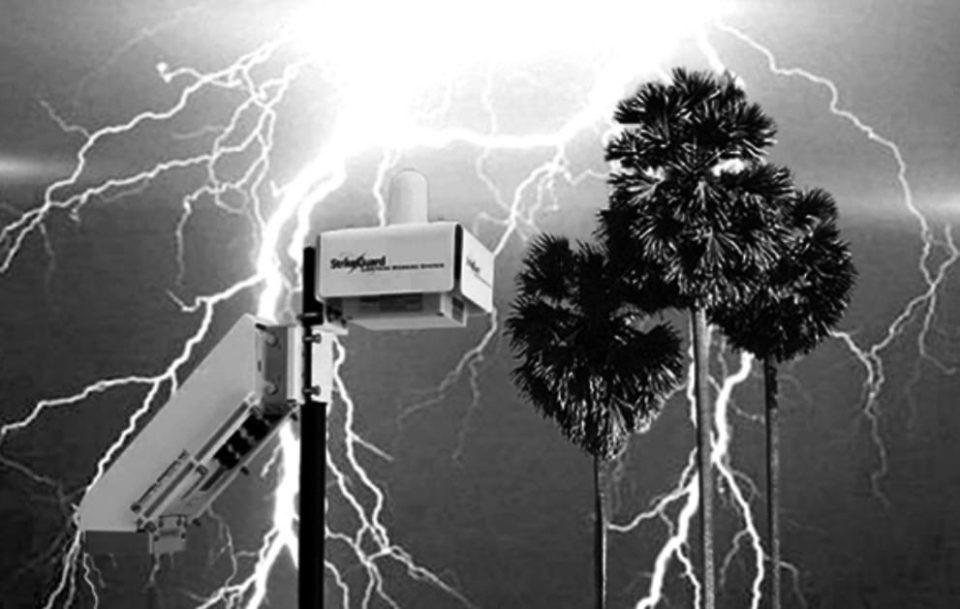District Correspondent, Sylhet:
With the onset of the storm and rain season, fatalities from lightning strikes have been rising alarmingly in the Sylhet region. Lightning strikes have become a source of terror in the area. In just one and a half months, 14 people have died in lightning strikes across the Sylhet division, with Sunamganj district reporting the highest number of fatalities—six deaths, mostly farmers, all occurring in the Haor wetlands. On May 1 alone, two individuals lost their lives to lightning strikes in Sunamganj district in Dirai and Jamalganj upazilas, both in the Haor region.
Meteorologists suggest that the sudden rainfall following intense heat this season has increased the frequency of lightning strikes. The risk of severe lightning accompanied by moderate rainfall still looms over Sylhet. Authorities have urged everyone to remain vigilant. Statistics indicate that an average of 250 to 300 people lose their lives annually to lightning strikes in Bangladesh, 93% of them in rural areas. Among the country’s 15 lightning “hotspots,” Sylhet, Sunamganj, and Habiganj stand out. Open Haor areas contribute to higher mortality rates in these regions.
Reports reveal that 14 people have died due to lightning strikes in Sylhet this season. Most of the victims were involved in agricultural activities. Between March 18 and May 1, 12 fatalities were reported in the division. Among these, eight occurred in Sunamganj, three in Habiganj, one in Moulvibazar, and two in Sylhet. Most of the deaths resulted from open-field lightning strikes while harvesting paddy.
The most recent incidents occurred last Thursday afternoon, when separate lightning strikes claimed two lives in Sunamganj district. In Jamalganj upazila’s Fenarbak union, farmer Manik Mia (35) died while harvesting paddy in Paknar Haor. He was the son of late Hossain Ali of Lakshipur village.
On the same day, farmer Rinku Das (30) from Gopalpur village in Char Narchar union of Dirai upazila died while transporting paddy in a trolley. He was the son of late Randhir Das of Gopalpur village.
On April 28, lightning strikes claimed three lives in a single day in Sylhet division. In Shalla upazila of Sunamganj, a college student named Rimon Talukdar died while grazing cattle in the Haor. The cattle accompanying him also perished. In Habiganj’s Baniachong upazila, Durvasa Das, a laborer, died while harvesting paddy in the Haor, and three others were injured. Meanwhile, Makhon Rabi Das, a tea laborer, died in Moulvibazar’s Barlekha upazila while harvesting paddy.
On April 25, in Sylhet’s Gowainghat upazila, Dubai expatriate Jibon Mia died after being struck by lightning while collecting cows in a field. On the evening of April 23, Abu Aiyub (20), a farmer from Sechni village in Sunamganj’s Dirai upazila, died while collecting hay. The previous day, Iqbal Hossain, a day laborer from Rasulpur in Bhola, died while harvesting paddy in Chandipur village in the same upazila. On the same day, Zilan Mia died in Fenchuganj, Sylhet, after being struck by lightning while boating on the Kushiyara River.
Earlier, on April 16, two laborers from Chapainawabganj—Monirul Islam and Kapil Uddin—died while harvesting paddy in Shibpasha Haor, Azmiriganj, Habiganj. On April 15, two farmers—Amir Uddin and Delwar Hossain—died in Sunamganj’s Chhatak and Shantiganj upazilas. On March 18, early in the morning, a youth named Saidul Islam died in Bashatla, Doarabazar, Sunamganj, while fetching water from a tube well.
Experts believe that the use of lightning conductors in urban buildings has significantly reduced lightning fatalities in cities. However, the lack of such installations in rural areas, combined with the reduction of tall trees, has led to higher fatalities in open fields. Haor areas see the highest number of lightning-related deaths, as most crop fields lack tall trees for protection.
Specialists have previously highlighted that Sylhet experiences a high frequency of lightning strikes due to its unique environmental factors. Shahjalal University of Science and Technology professor Dr. Md. Anwarul Islam describes the region’s rainfall as “conflicting rain,” caused by monsoon winds from the sea being obstructed by Meghalaya’s Khasi and Jaintia hills at the border.
Dr. Islam explains that global warming and the warm environment at the foothills of Meghalaya interact with moist air from the sea, disrupting the natural environmental process and causing conflicting rainfall, which increases lightning activity. Human-induced environmental destruction, such as changes in land use and reduced water bodies, exacerbates the problem.
Research shows that land use in Sylhet has drastically changed over a decade, with water bodies shrinking by nearly two-thirds. In 2010, 30% of Sylhet’s land was used for agriculture, which has now increased to 70%. While this addresses food shortages, it also eliminates natural water reservoirs, increasing temperature fluctuations and humidity disparities, leading to more frequent lightning strikes.
Sylhet Meteorological Office assistant meteorologist Sajib Hossain states that lightning strikes are common during the Bengali month of Baishakh. March, April, and May see the highest number of strikes in Bangladesh, coinciding with Haor residents harvesting boro paddy.
He adds that climate change has disrupted seasonal patterns, with lightning strikes now occurring in July, August, and September, causing fatalities even then. To reduce deaths, scientific methods must be employed, and precautionary measures should be taken during lightning-prone periods.

